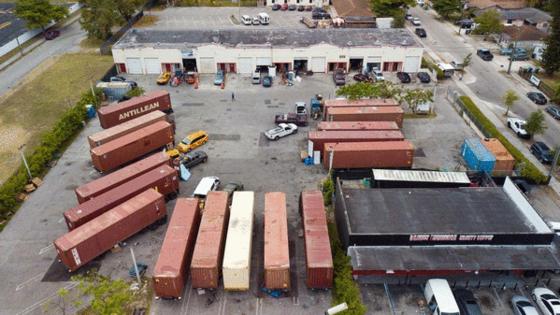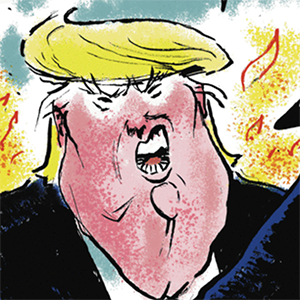Report: Majority of trafficked guns in Caribbean are from the US, shipped from Florida
Published in News & Features
A new report from the U.S. government’s lead investigator on gun trafficking in the Caribbean area is confirming what region leaders have long said: Most of the firearms wreaking havoc in their vulnerable nations and being used in 90% of the homicides are coming from the United States.
However, the report from the Government Accountability Office, which was requested by three high-ranking House and Senate Democrats, also shows the lack of political will on the parts of some Caribbean governments and shortcomings in the U.S. to tackle the problem.
The report notes that while 73% of the guns recovered over a five-year period between 2018-23 by the Bureau of Alcohol, Tobacco, Firearms and Explosives, were traced back to the U.S., some Caribbean governments have shown greater willingness than others to recover and trace firearms. Also, despite their complaining, some countries do not allow sting operations, known as international controlled deliveries, to identify illegal trafficking networks by allowing shipments of inoperable guns to go to the intended recipients.
The report also found that the majority of the firearms recovered in the Caribbean were sold in Florida, Georgia and Texas.
Though the acute crisis in Haiti, where heavily armed gangs have the capital under siege, needs greater attention, Democratic U.S. Rep. Joaquin Castro of Texas said the report shows “how criminal organizations across the Caribbean source their weapons from the United States in a deadly trade that has contributed to the collapse of Haitian society and devastating loss of life across the region.
“The most effective way to address violence and instability in the Caribbean is to prevent U.S. guns from falling into the hands of criminals,” said Castro, a ranking member of the House Foreign Affairs Subcommittee on the Western Hemisphere, who requested the report.
Joining Castro in the push for the report were New York Rep. Gregory Meeks and Illinois Sen. Majority Whip Dick Durbin. All said they had received pleas from Caribbean leaders to help stop gun trafficking from the U.S.
“These weapons destabilize communities and compound the challenges faced by our Caribbean neighbors, enabling gangs and transnational criminal networks to perpetrate crime that undermines U.S. national security and regional stability,” Meeks said. “We must invest in efforts to stem the flow of illicit weapons from our shores to the Caribbean. Doing so will protect communities in the United States, Caribbean and wider Western Hemisphere.”
The GAO report coincides with a study by the International Monetary Fund and Inter-American Development Bank this week that shows the high cost of crime in Latin America and the Caribbean. The study found it is limiting growth, driving inequality and diverting private and public investments.
The study notes that criminal networks are also growing more sophisticated and interconnected, across the hemisphere and in the Caribbean specifically, contributing to high rates of homicide.
The GAO study notes several measures taken by the Biden administration to assist Caribbean countries in tackling gun-trafficking. But it also highlights the shortcomings of some of these efforts. Though ATF has implemented the use of eTrace — an internet-based firearm tracing system — in the Caribbean, language barriers and the violence in Haiti have prevented cops from using it to trace or even recover guns, the report said.
The security environment in Haiti was also cited as the reason a Transnational Criminal Investigative Unit, established by Homeland Security Investigations and announced by Vice President Kamala Harris during a meeting with Caribbean leaders in The Bahamas last year, has not gotten off the ground.
Elsewhere in the Caribbean, efforts are hampered by corruption, a lack of coordination among law enforcement agencies and the lack of a reliable data system in most countries, which are still using paper to track firearms.
“For example, Jamaican officials said that their firearms records are paper-based and not centralized, making them less accessible and difficult to analyze. Paper-based systems are also vulnerable to loss and accidental destruction due to fire or water damage,” the report said.
During the period examined, Jamaica led the 25 Caribbean countries and territories with at least 2,250 recovered firearms, according to the GAO report. Interviews revealed that the country does not have the staffing and equipment to properly scan the large number of shipments being imported, and is among the countries where firearms enter at unofficial ports without being inspected. Law enforcement in Jamaica noted that while the country has nine government-controlled ports, there are 151 that are uncontrolled.
“Agency officials said firearms traffickers will conceal firearms in a legal export shipment and will misrepresent the shipment’s value, such as claiming the total value is less than $2,500, to avoid having to electronically file the shipment with the government’s Automated Export System (AES) and evade U.S. government oversight,” the report said.
Jamaica is also among the Caribbean countries where residents are allowed to import one duty-free barrel of goods from the U.S. per year, which is used during the holiday season in December. As a result, U.S. agencies, in advance of 2023, increased resources to screen outbound cargo from the U.S. to the Caribbean via freight forwarders at the Miami River to combat firearms trafficking from the duty-free barrel program.
Gun-sniffing dogs were also used to help combat the illicit flows of firearms and had success uncovering firearms. But ATF officials told investigators that they do not plan to continue providing such assistance due to high costs, and since port conditions in the country are not safe enough for the operations.
Data from the 25 countries and territories show that handguns represent the majority, or 88%, of firearms recovered and traced from the Caribbean, though long guns and automatic weapons are starting to become problematic. In fact, during the study period, the number of long guns submitted for tracing across the Caribbean nearly tripled to 15% of all weapons examined.
U.S. and Caribbean law enforcement officials also report seeing a rise in privately manufactured firearms and component parts. Law enforcement officials also said 3D printers and their ability to print firearm parts may also be contributing to an increase. Such an operation was uncovered in Trinidad and Tobago. The 3-D printing lab had been used to produce firearms, ATF officials said.
“Our country’s lax gun laws have created a vicious cycle of firearms trafficking to international drug cartels and criminal organizations, recklessly destabilizing countries throughout the region,” said Durbin, chair of the Senate Judiciary Committee.
“Today’s report demonstrates the severity of this phenomenon, which unleashes violence, drug trading, and chaos in its wake,” he added. “We need to stem the ‘iron river’ of firearms trafficking and pass additional commonsense gun safety legislation.”
Castro, the Texas congressman, has introduced the ARMAS Act, which calls for the development of a comprehensive interagency strategy to disrupt trafficking. He is also a co-sponsor of another anti-gun smuggling bill, CATCH Act, with Democratic U.S. Rep. Sheila Cherfilus-McCormick of Florida.
_____
©2024 Miami Herald. Visit miamiherald.com. Distributed by Tribune Content Agency, LLC.







Comments